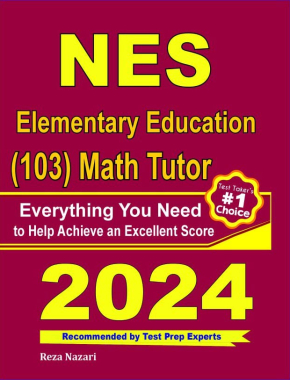Digital Platforms: Revolutionizing Math Education

Have you ever wondered how digital platforms are reshaping the way we teach and learn mathematics?
As you’re exploring through today’s digital era, you’ll notice a significant shift in teaching methodologies, especially in math education.
It’s not just about solving equations anymore; it’s about understanding concepts while engaging in interactive, personalized learning experiences.
This revolution surely piques your interest, doesn’t it?
Stick around, and you’ll discover how this digital transformation could redefine your perspective on math education.
The Rise of Digital Learning Platforms
As you navigate the evolving landscape of education, you’ll notice a significant shift towards digital learning platforms, a transformative trend sparked by technological advancements and the increasing accessibility of the internet. These platforms aren’t mere fads; they’re reshaping the way we approach education, and math is no exception.
The digitization of education has been a gradual yet steady process. Traditional classrooms have been enhanced with digital tools, giving birth to blended learning environments. You’ve probably experienced this change firsthand, with educational resources migrating online and becoming more interactive, personalized, and engaging.
These platforms, with their inherent adaptability, allow you to learn at your own pace. They offer a myriad of resources, from video tutorials to interactive quizzes, which not only reinforce mathematical concepts but also make learning more enjoyable. Imagine the difference between reading a textbook and engaging with dynamic content that adjusts to your learning style.
But it’s not just about convenience or engagement. These platforms bridge gaps by providing access to quality education regardless of geographical constraints. You’re no longer limited by the resources of your local area. You can tap into global knowledge networks, democratizing education and leveling the playing field. This is the revolution digital learning platforms bring to math education.
Revolution in Teaching Math Concepts
Now let’s explore how this digital shift is revolutionizing the way math concepts are taught, making them more accessible and comprehensible than ever before.
You see, traditional math education often relies on rote memorization, which can lead to a lack of understanding and difficulty in applying concepts. Digital platforms are changing this by introducing interactive and dynamic ways of teaching.
Instead of learning from static diagrams and equations, you’re now able to manipulate 3D models and animations. This isn’t just visually stimulating; it helps you grasp abstract concepts by providing a concrete, visual representation. You’re not simply memorizing formulas; you’re understanding why they work.
Furthermore, these platforms provide personalized learning experiences. They adapt to your learning pace and style, reinforcing your understanding of the concepts you’re struggling with. They can also pinpoint your gaps in understanding, offering targeted exercises to address those areas. This personalized approach prioritizes comprehension over memorization, fostering a deeper understanding of math concepts.
The Arizona online highschool can also benefit from these personalized learning experiences. They adapt to the students’ pace and style, reinforcing their understanding of various concepts.
Impact on Student Engagement and Performance
Digital platforms are transforming student engagement and performance in math, catapulting traditional education methods to new heights. They’re not only changing the way you learn but also how you perform.
The interactive nature of these platforms keeps you engaged, turning monotonous math lessons into interactive experiences. You’re no longer a passive receiver of information, but an active participant in your learning. By allowing you to visualize mathematical concepts, they help you understand rather than memorize.
These platforms also positively affect your performance. Studies show students using digital platforms tend to perform better in math. Why? Well, you get instant feedback, which guides your learning and helps you correct mistakes immediately. Additionally, they offer a vast array of resources, from practice questions to explanatory videos, enhancing your understanding and hence, your performance.
Furthermore, digital platforms provide a safe space for you to practice without fear of judgment, boosting your confidence.
Adapting to Individual Learning Styles
One remarkable advantage of digital platforms in math education is their capacity to adapt to your unique learning style, making the learning process more efficient and enjoyable. Whether you’re a visual, auditory, reading/writing, or kinesthetic learner, digital platforms can modify teaching methods to suit your preferences. For instance, if you’re a visual learner, the platform can provide more graphs, charts, and images to aid your understanding.
The platforms’ adaptive learning technology uses algorithms to analyze your interaction with the software. As a result, they can predict what teaching methods work best for you and customize the educational material accordingly. This personalization doesn’t just enhance your understanding but also boosts your confidence by providing a supportive learning environment that respects your pace and approach to learning.
These platforms also incorporate gamification techniques to make math more engaging for you. Games, rewards, and challenges are introduced to motivate you and make the learning process fun. Don’t you think it’s a great way to learn and grow?
Accessibility and Inclusivity in Math Education
Beyond adapting to individual learning styles, digital platforms are breaking down barriers in math education by promoting accessibility and inclusivity. No longer is the classroom the only place where learning happens. You can now access math lessons, exercises, and tools right at your fingertips, wherever you are, whenever you want.
Digital platforms are making math education more inclusive and accessible in these ways:
- Democratizing learning: Anyone with an internet connection can now access high-quality math resources. It’s no longer about who can afford extra tuition or private tutors.
- Breaking down physical barriers: Mobility issues, living in remote areas, or even global pandemics can’t stop you from learning.
- Accommodating different abilities: With features like text-to-speech, adjustable font sizes, and color contrasts, these platforms ensure everyone gets a fair chance at learning.
- Promoting diversity: By providing resources in multiple languages and culturally relevant content, they’re making math education more inclusive and appealing.
The result? A more level playing field where everyone, regardless of their circumstances, can learn math and improve their problem-solving skills. It’s a significant step towards a more inclusive, accessible world of education. Now, isn’t that a revolution worth celebrating?
Future Prospects of Digital Math Education
Looking ahead, it’s clear that the potential for digital math education is immense, promising to further reshape the way we approach learning in this critical field. You’re on the brink of a revolution in education, where technology blurs the lines between teacher-led and self-paced learning.
Artificial intelligence will play a pivotal role in this future landscape. Imagine AI-based programs that adapt to your learning style, identify gaps in your understanding, and provide personalized lessons at your own pace. This isn’t science fiction; it’s the future of math education.
Additionally, the rise of virtual and augmented reality technologies will provide immersive, interactive experiences. You could explore complex math concepts in a 3D environment, enhancing your comprehension and retention.
Don’t overlook the role of big data and analytics either. These tools will provide insights into learning patterns and performance, enabling educators to tailor their instruction more effectively.
However, realizing this future isn’t without challenges. Issues around access, privacy, and quality control need addressing. But with the right commitment and investment, digital math education could transform how you learn, making it more engaging, personalized, and effective. The future of math education is digital, and it’s closer than you think.
Related to This Article
More math articles
- How to Solve Angle Measurements Word Problems
- ASTB Math Formulas
- How to Calculate the Surface Area of Pyramids and Cones
- Word Problems Involving Writing a Ratio
- How to Solve Trigonometric Equations?
- Properties of the Horizontal Line
- Number Properties Puzzle – Challenge 20
- How to Solve One-step and Two-step Linear Equations Word Problems
- Top 10 8th Grade SBAC Math Practice Questions
- How to Manage Your Time Effectively on the Praxis Core Math Test?


























What people say about "Digital Platforms: Revolutionizing Math Education - Effortless Math: We Help Students Learn to LOVE Mathematics"?
No one replied yet.